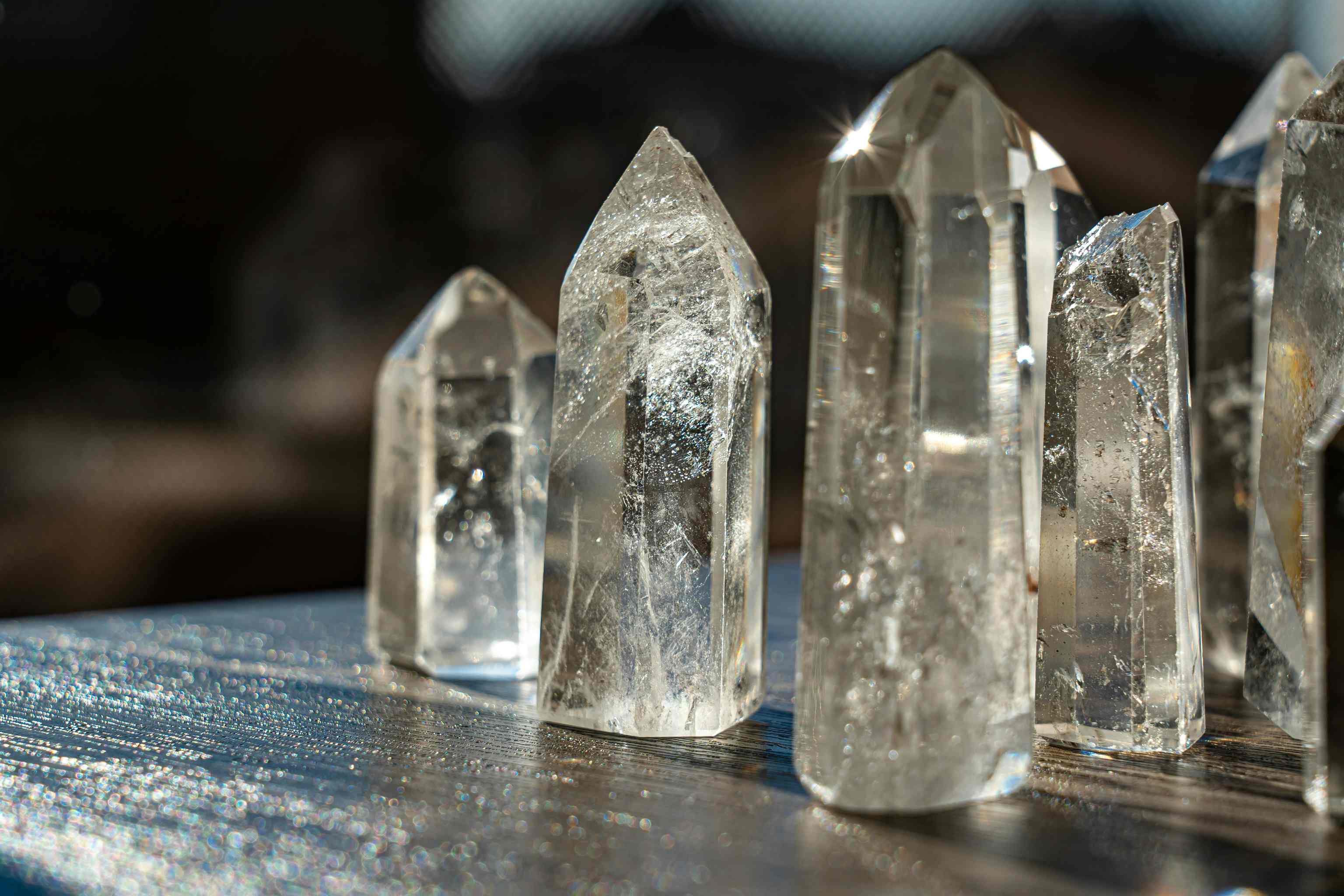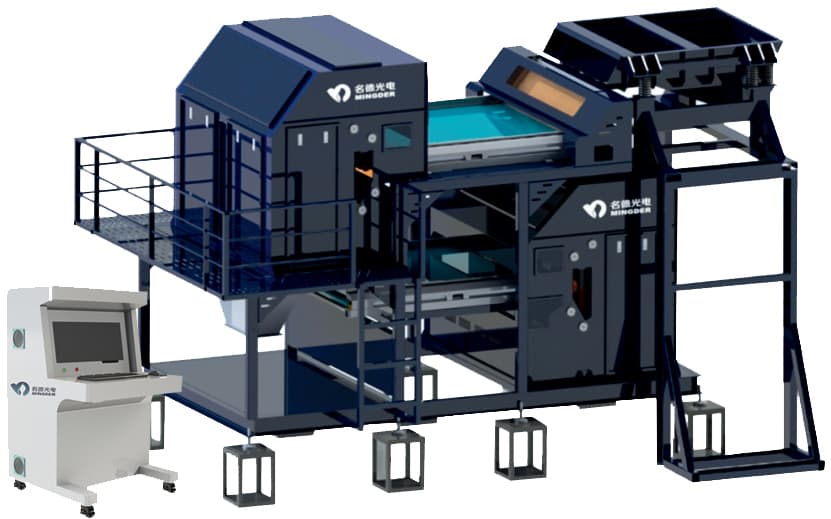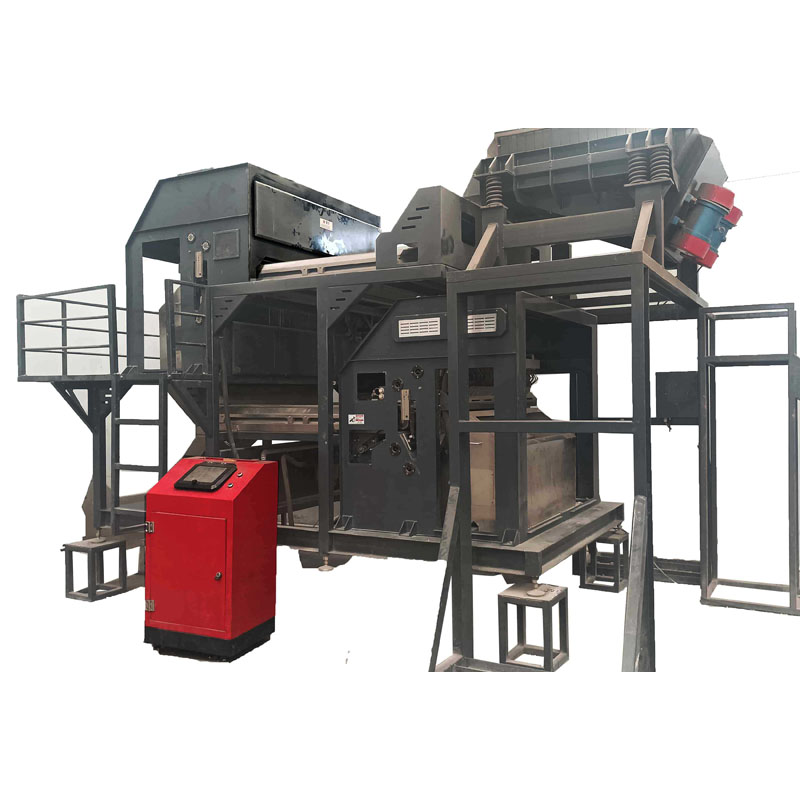 Common Types, Characteristics and Market Applications of Quartz Deposits
Aug 07, 2024
Common Types, Characteristics and Market Applications of Quartz Deposits
Aug 07, 2024
We have discussed eight ore sorting methods on the market before, and I believe everyone has some understanding of ore sorting. Today, let's change the topic and discuss quartz ore. With the development of AI technology in recent years, the chip industry has become more and more prosperous, and the demand for silicon has also increased. Although the consumption of quartz has declined in the second quarter of this year, the overall situation is still good.
Quartz ore is a widely distributed silicate mineral, the main component of which is silicon dioxide (SiO2). Different types of quartz ores differ in their genesis, physical and chemical properties, and industrial applications.
There are roughly 7 common quartz deposits in nature. Today we will introduce them all at once, and also briefly talk about the two most popular industrial applications of quartz at this stage.
1. Natural Crystal
There are large transparent quartz crystals in nature, which are mainly used for carving crafts. They are less in resources and expensive. This kind of quartz ore is mainly used for carving crafts, such as jewelry and decorations. High-quality natural crystals are also used to make optical crystal materials and piezoelectric crystal materials.
2. Granite Quartz
Granite quartz, also known as pegmatite quartz, is a very popular quartz ore in the past two years. It is formed by magma and is the main raw material for producing high-purity quartz. It is used in electronic information, new materials and new energy fields, especially in the semiconductor industry, for the manufacture of quartz crucibles and other key semiconductor manufacturing equipment.
3. Vein Quartz
Formed under the action of magma hydrothermal fluids, it has a single mineral composition, almost all of which is quartz, and is suitable for the production of high-purity silicon micropowders. These silicon micropowders have important applications in strategic emerging industries such as electronic information, new materials and new energy. The high purity and low iron content of vein quartz make it one of the ideal mineral raw materials for processing high-purity quartz.
4. Quartz Sandstone
It is formed by the deposition and consolidation of siliceous debris and is widely used in the production of daily glass sand, glass fiber, metallic silicon, refractory materials, white carbon black, silicone, etc. Its stable geological occurrence and suitable particle size make it an important raw material in these fields.
5. Quartzite
Dense and hard rock formed by regional metamorphism or thermal contact metamorphism, mainly used to make high-strength, high-hardness and wear-resistant building materials, such as artificial stone, artificial granite, artificial jade, etc. Its dense and hard characteristics make it outstanding in decorative effects and durability.
6. Powdered Quartz
Natural powdered quartz with extremely fine particles and high silica content, mainly formed by weathering and disintegration of siliceous parent rock, is often used to make fine ceramics, refractory materials, etc.
7. Natural Quartz Sand
Sand-like quartz mineral raw materials formed by weathering are mainly used for casting sand, 3D printing sand, etc. Its high purity and refractory properties make it indispensable in the casting industry.
The above seven types of quartz deposits can be distinguished by a series of physical and chemical characteristics, including color, transparency, crystal morphology, gloss, hardness, specific gravity and specific optical properties.
Here are some commonly used identification methods:
1. Color and Transparency: Different types of quartz ores may show different colors and transparency. For example, crystal is usually transparent, while agate is composed of layered quartz with different color stripes.
2. Crystal Morphology: The crystal morphology of quartz can help identify its type. For example, α-quartz and β-quartz are stable at different temperatures and have different crystal structures. In addition, quartz can also form a variety of homogeneous variants such as tridymite and cristobalite, which have unique crystal morphologies.
3. Luster and Hardness: Quartz usually has a glassy luster and a high hardness, with a Mohs hardness of 7.
4. Specific Gravity: Different types of quartz ores have different specific gravity due to their different impurity content and crystallization state.
5. Optical Properties: Some quartz ores may show birefringence, that is, light splits into two beams when passing through the mineral. This phenomenon can be detected by polarizing microscope observation.
6. Chemical Analysis: By chemically analyzing a quartz sample, its precise chemical composition can be determined and its type can be further confirmed.
7. X-ray Diffraction Analysis: XRD can be used to determine the crystal structure of quartz, thereby helping to distinguish different quartz variants.
8. Infrared Spectrum Analysis: Different types of quartz may show different absorption peaks on the infrared spectrum, which can be used as a basis for identification.
For example, if we encounter quartzite and vein quartz in the field, we can base our identification on their structural characteristics and occurrence. The bedding and block structure of quartzite and the vein-like occurrence of vein quartz are important identification points. In addition, although the color of quartzite is not as bright as vein quartz, its bedding structure helps to identify it. If conditions permit, a magnifying glass can be used to observe the arrangement of quartz particles. The quartz particles in quartzite are usually smaller and more closely arranged.
Different types of quartz ores are used to meet the needs of different industrial fields due to their specific physical and chemical properties. At present, the most common industrial fields of quartz ores are mainly electronic information industry and construction industry.
Quartz ores are mainly used as raw materials for the following products in the electronic information industry:
1. Semiconductor Wafer Manufacturing: Quartz products play a key role in semiconductor wafer manufacturing, including quartz glass products used in key processes such as diffusion, oxidation, deposition, photolithography, etching and cleaning. These products have the characteristics of high purity, pollution-free, and high temperature resistance, ensuring the quality and performance of semiconductor wafers.
2. Single Crystal Silicon Growth: When producing single crystal silicon, quartz crucibles and quartz devices are indispensable because they can withstand high temperature environments without reacting with silicon.
3. Photolithography and Etching Processes: Quartz materials are used to make tools and containers in photolithography and etching processes, such as quartz sheets, quartz rings, and quartz boats. These tools need to have extremely high purity and chemical corrosion resistance.
4. Optical Fiber Manufacturing: Quartz fiber plays an important role in optical fiber communication. High-purity quartz is a key material for manufacturing quartz optical fiber because it determines the light transmission spectrum of the optical fiber.
5. Electronic Packaging: Quartz materials are also used for packaging electronic components to provide electrical insulation and thermal stability.
Because of the physical and chemical properties of quartz stone, such as wear resistance, corrosion resistance, high temperature resistance, and easy cleaning, quartz stone is also widely used in the construction industry, as follows:
6. Interior Decoration: Quartz stone can be used as a material for floors and walls, providing beautiful and durable decorative effects.
7. Kitchen Countertops: Quartz is often used as a kitchen countertop material because of its wear-resistant, corrosion-resistant and easy-to-clean properties.
8. Bathroom Walls: Quartz's waterproof and moisture-proof properties make it suitable for bathroom wall paving.
9. Floor Paving: Quartz floor tiles are wear-resistant and corrosion-resistant, and are suitable for floor paving.
10. Commercial Buildings: Quartz is also widely used for interior and exterior decoration in commercial buildings such as shopping malls, hotels, and office buildings.
11. Public Facilities: Quartz is also used as a decorative material in public facilities such as schools, hospitals, and libraries.
12. Building exterior walls: Quartz, as an exterior wall decoration material, can resist external wear and corrosion and maintain long-term beauty.
Different industrial applications of quartz have different requirements for the purity and quality of quartz ore, which requires us to sort quartz ore and separate useless minerals and harmful impurities. In addition, quartz ore sorting can also help reduce production costs, improve the comprehensive utilization rate of resources, reduce environmental pollution, and promote the sustainable development of the mining industry.
When it comes to quartz sorting, we have to mention the color sorter and AI intelligent sorter launched by Mingde Optoelectronics Technology Co., Ltd.
If it is used as a raw material for plates, customers generally have requirements for the color and whiteness of quartz ore, and need to remove iron-containing impurities and some other colors of gangue. Mingde color sorter can accurately separate the ore according to the color of the ore and improve the whiteness of quartz. The ore treated by the color sorter can even be directly ground to make plate materials.
If it is used to make high-purity quartz sand, the customer's purity requirements for quartz ore are much higher than that of plate raw materials. At this time, we need to use our AI intelligent machine for processing. It can accurately analyze the sorted ore according to the surface characteristics of the extracted good ore, and accurately separate impurities, associated ores, and good ores.
Well, today's introduction to different quartz ores is here. Mingde Optoelectronics Sorting Technology Co., Ltd. is a high-tech enterprise specializing in the research and development, design, manufacturing, sales and service of intelligent sorting, intelligent sorting robots and mining equipment for mining. We have been specializing in the production of sorting equipment for 10 years. If you are interested, please feel free to consult and we will see you another day.
 ¿Cómo elegir el clasificador de color del mineral?
Nov 24, 2022
¿Cómo elegir el clasificador de color del mineral?
Nov 24, 2022
 ¿Cuál es el principio de funcionamiento del clasificador de color?
Feb 20, 2023
¿Cuál es el principio de funcionamiento del clasificador de color?
Feb 20, 2023
 Los desafíos y estrategias de los equipos de clasificación fotoeléctricos para la clasificación de minerales
Jul 05, 2024
Los desafíos y estrategias de los equipos de clasificación fotoeléctricos para la clasificación de minerales
Jul 05, 2024
 Common Types, Characteristics and Market Applications of Quartz Deposits
Aug 07, 2024
Common Types, Characteristics and Market Applications of Quartz Deposits
Aug 07, 2024
 A Comprehensive Introduction to Calcium Carbonate
Aug 31, 2024
A Comprehensive Introduction to Calcium Carbonate
Aug 31, 2024